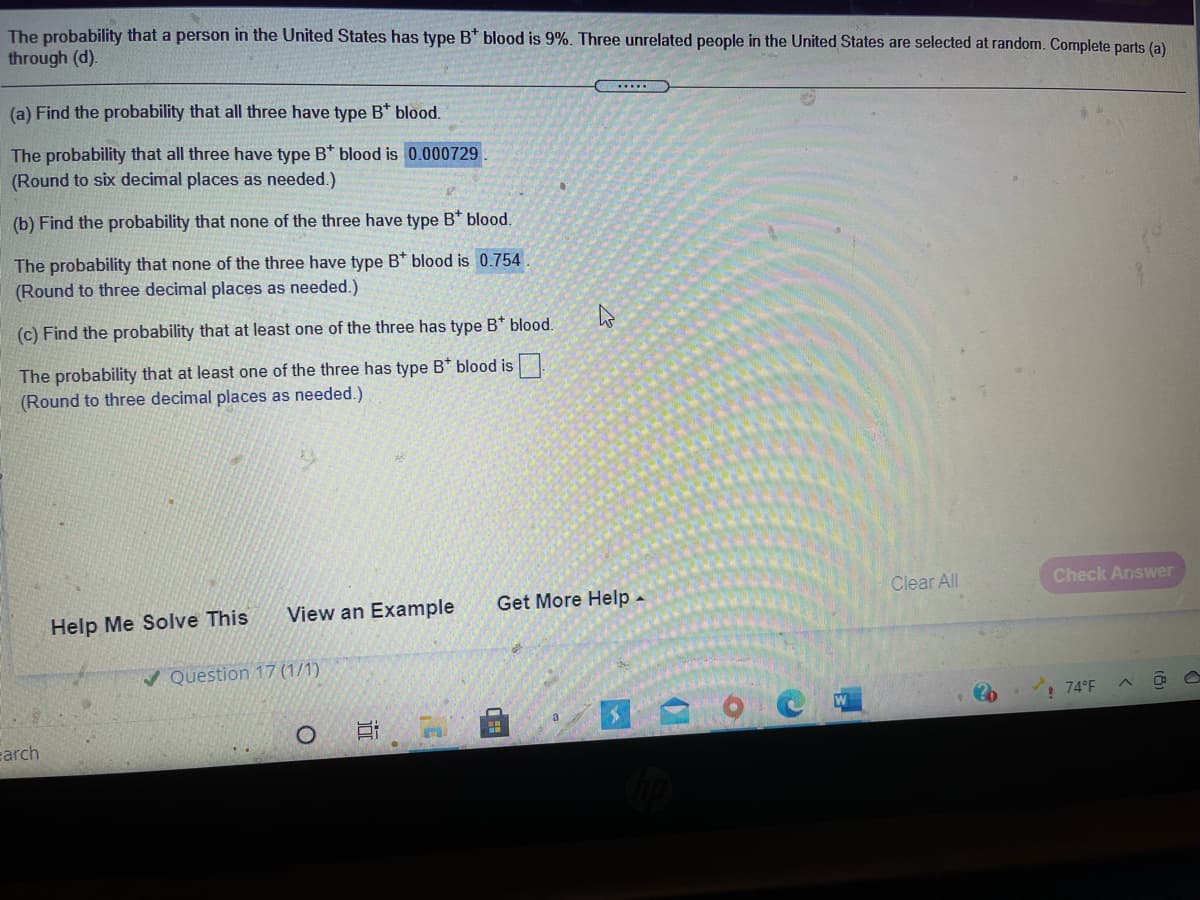In a recent year, about 36% of all infants born in a country were conceived through in-vitro fertilization (IVF). Of the IVF deliveries, about twenty-six percent resulted in multiple births. (a) Find the probability that a randomly selected infant was conceived through IVF and was part of a multiple birth. (b) Find the probability that a randomly selected infant conceived through IVF was not part of a multiple birth. (c) Would it be unusual for a randomly selected infant to have been conceived through IVF and to have been part of a multiple birth? Explain. (a) The probability that a randomly selected infant was conceived through IVF and was part of a multiple birth is 0.094. (Round to the nearest thousandth as needed.) (b) The probability that a randomly selected infant conceived through IVF was not part of a multiple birth is. (Round to the nearest thousandth as needed.)
In a recent year, about 36% of all infants born in a country were conceived through in-vitro fertilization (IVF). Of the IVF deliveries, about twenty-six percent resulted in multiple births. (a) Find the probability that a randomly selected infant was conceived through IVF and was part of a multiple birth. (b) Find the probability that a randomly selected infant conceived through IVF was not part of a multiple birth. (c) Would it be unusual for a randomly selected infant to have been conceived through IVF and to have been part of a multiple birth? Explain. (a) The probability that a randomly selected infant was conceived through IVF and was part of a multiple birth is 0.094. (Round to the nearest thousandth as needed.) (b) The probability that a randomly selected infant conceived through IVF was not part of a multiple birth is. (Round to the nearest thousandth as needed.)
Holt Mcdougal Larson Pre-algebra: Student Edition 2012
1st Edition
ISBN:9780547587776
Author:HOLT MCDOUGAL
Publisher:HOLT MCDOUGAL
Chapter11: Data Analysis And Probability
Section11.8: Probabilities Of Disjoint And Overlapping Events
Problem 2C
Related questions
Question
Answer these 2 math questions

Transcribed Image Text:In a recent year, about 36% of all infants born in a country were conceived through in-vitro fertilization (IVF). Of the IVF deliveries, about twenty-six percent resulted
in multiple births.
(a) Find the probability that a randomly selected infant was conceived through IVF and was part of a multiple birth.
(b) Find the probability that a randomly selected infant conceived through IVF was not part of a multiple birth.
(c) Would it be unusual for a randomly selected infant to have been conceived through IVF and to have been part of a multiple birth? Explain.
(a) The probability that a randomly selected infant was conceived through IVF and was part of a multiple birth is 0.094
(Round to the nearest thousandth as needed.)
(b) The probability that a randomly selected infant conceived through IVF was not part of a multiple birth is
(Round to the nearest thousandth as needed.)
Clear All
Check Answer
View an Example
Get More Help -
Help Me Solve This
/ Question 17 (1/1)
74°F
Learch

Transcribed Image Text:The probability that a person in the United States has type B* blood is 9%. Three unrelated people in the United States are selected at random. Complete parts (a)
through (d).
....
(a) Find the probability that all three have type B* blood.
The probability that all three have type B* blood is 0.000729
(Round to six decimal places as needed.)
(b) Find the probability that none of the three have type B* blood.
The probability that none of the three have type B* blood is 0.754
(Round to three decimal places as needed.)
(c) Find the probability that at least one of the three has type B* blood.
The probability that at least one of the three has type B* blood is.
(Round to three decimal places as needed.)
Clear All
Check Answer
View an Example
Get More Help -
Help Me Solve This
V Question 17 (1/1)
74°F
earch
近
Expert Solution
This question has been solved!
Explore an expertly crafted, step-by-step solution for a thorough understanding of key concepts.
This is a popular solution!
Trending now
This is a popular solution!
Step by step
Solved in 4 steps

Recommended textbooks for you

Holt Mcdougal Larson Pre-algebra: Student Edition…
Algebra
ISBN:
9780547587776
Author:
HOLT MCDOUGAL
Publisher:
HOLT MCDOUGAL


Holt Mcdougal Larson Pre-algebra: Student Edition…
Algebra
ISBN:
9780547587776
Author:
HOLT MCDOUGAL
Publisher:
HOLT MCDOUGAL
